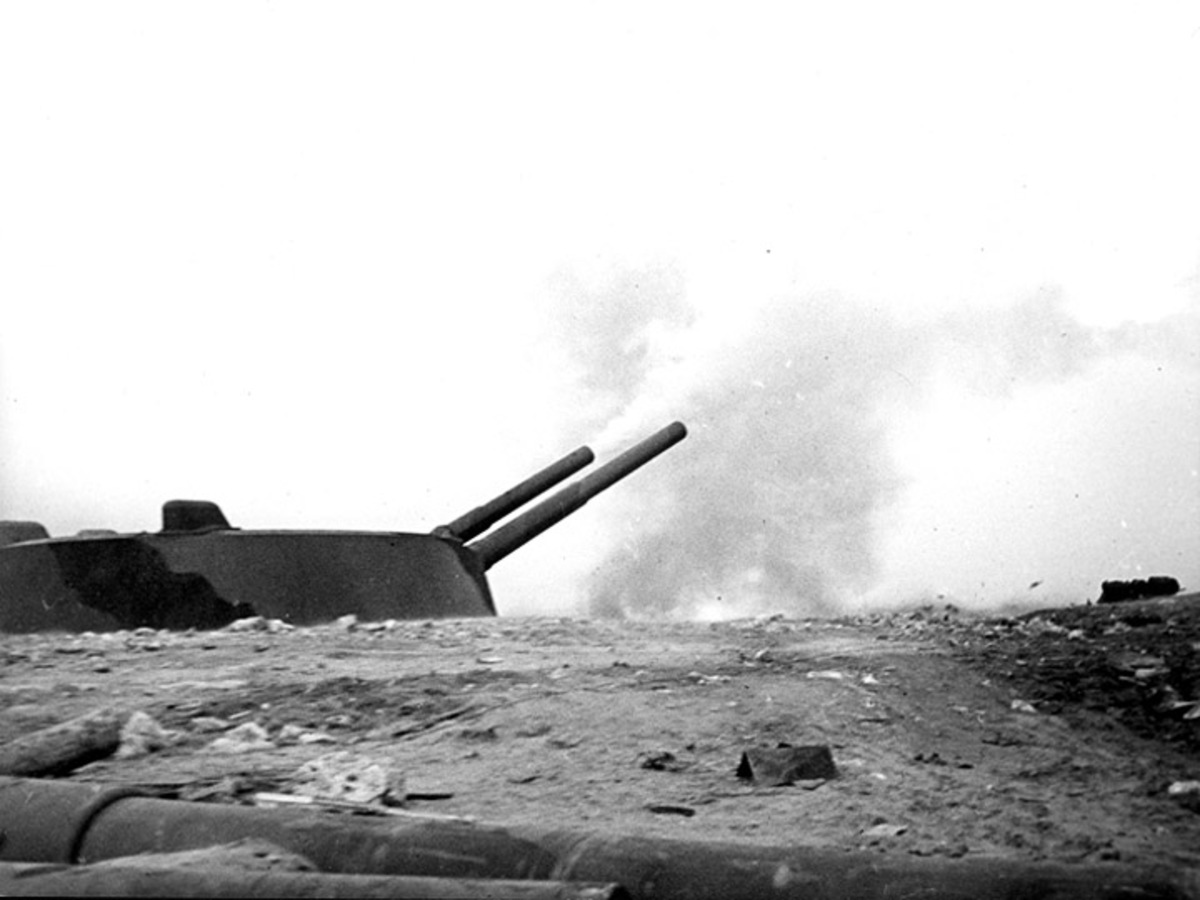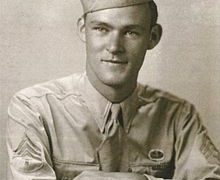Armored turret battery No. 35, or the 35th battery (German designation – “Maxim Gorki II”)
One of the most powerful fortification artillery structures of coastal defense (BO) of the Main Naval Base of the Black Sea Fleet of the USSR, the construction of which was started at the beginning of the 20th century by the Russian Empire to strengthen Sevastopol as the base of the Imperial Black Sea Fleet. This plan was continued already in the Soviet period from the 1920s until the start of the Great Patriotic War in 1941.
Battery No. 35, despite a number of misadventures associated with technical malfunctions of guns in the Great Patriotic War, acted heroically throughout almost the entire defense of Sevastopol in 1941-1942.
Location
Sevastopol, Khersones Peninsula, 150 m from the road to the left when moving from the Cossack Bay in the direction of the Chersonesos lighthouse.
Designation and numbering
- 1913 – Battery No. 25 of the coastal defense of the Imperial Black Sea Fleet (not commissioned) ;
- 1924 – Battery No. 8 of the fortress “Sevastopol” (in completion) ;
- October 1925 – Battery No. 8 of the Crimean region of the Black Sea BO and the Sevastopol fortress (in completion);
- November 1926 – Separate battery No. 8 of the 6th fortress artillery regiment of the Black Sea BO (in completion);
- November 1927 – Battery No. 35 of the 1st Division of the 6th Fortress Artillery Brigade of the Black Sea Naval Forces (commissioned in the fall of 1929);
- 1941 – 35th armored turret battery of the 1st separate artillery battalion of the Black Sea Fleet of the GVMB ;
- from 18.06. 1942 to 04.12. 1943 – 35th armored turret battery of the 1st separate guards artillery battalion of the Black Sea Fleet of the Main Military Base;
- 04.12. 1943 By order of the Naval Commissariat of the Navy, Armored Turret Battery No. 35 was expelled from the Navy as having died while performing combat missions;
- the German designation is “Fort Maxim Gorky II”.
Main technical characteristics
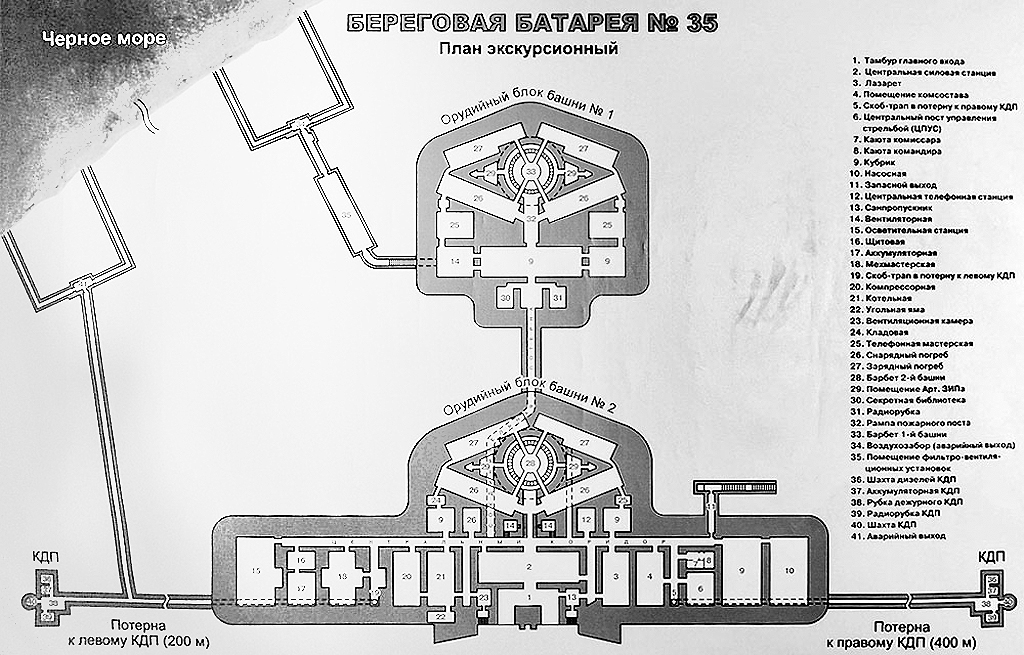
35th Battery Map
The 35th coastal battery was armed with two MB-2-12 two- gun turrets manufactured by the Leningrad Metal Plant (the gun mounts and some of the mechanisms were removed from the Poltava battleship turrets). Baltic Fleet). The battery consisted of two gun blocks with reinforced concrete walls 2-3 meters thick. In these arrays, gun turrets were installed. Inside the 1st tower, on two floors, there were cellars for ammunition, rooms for domestic and office needs. Inside the array of the 2nd tower there is a power station and a central rangefinder post with fire control devices. Coastal Battery No. 35 had a modernized (for that period) anti-shock and anti-chemical protection system. To the south, 2 km, for the purpose of camouflage, a false 35th BB was built, the premises of which were used for security and service units. Around the battery were long-term firing points (bunkers) and fortifications for small arms fire. Two command and rangefinder posts were located, respectively, 450 m to the north (right KDP), and 200 m to the south (left KDP). These structures had armored conning towers and open courtyards for rangefinders. Such a distance between the battery and the command and rangefinder posts was due to the need for accurate target designation, since errors in calculations could occur during firing and, accordingly, strong vibration. Tower arrays and KDP were connected by underground posterns (tunnel-like passages). Two emergency exits connected the battery to the seashore.
Weapon characteristics:
- Caliber, mm : 305 mm
- Barrel length, mm/calibers: 15850/52
- Barrel weight with bolt, kg: 50 600
- Projectile weight, kg: 470.9 kg
- Muzzle velocity, m/s : 853
- Loading principle: separate
- Rate of fire, rounds per minute: 2.2… 3 rds / min.
Battery commanders
| 1 | Steinberg Genrikh Vladimirovich | October 1925 – September 1927 |
| 2 | Donets Emelyan Petrovich | October 1927 – October 1928 |
| 3 | Kabalyuk Ivan Filippovich | December 1928 – August 1929 |
| 4 | Chukharev Nikolay Petrovich | August 1929 – December 1929 |
| 5 | Rull August Andreevich | November 1930 – December 1931 |
| 6 | Morgunov Petr Alekseevich | December 1931 – October 1933 |
| 7 | Ryumin Alexander Alexandrovich | October 1933 – February 1936 |
| 8 | Bulygin Stepan Filippovich | February 1936 – February 1939 |
| 9 | Balan Nikolai Mikhailovich | February 1939 – November 1940 |
| 10 | Leshchenko Alexey Yakovlevich | November 1940 – July 1942 |
On June 30, 1942, when the battery commander A. Ya. Leshchenko failed, the assistant battery commander Adolf Samuilovich Rotenberg, who directly led the defense of the battery from land, took command of the battery.
On June 30, 1942, when the enemy attacked the 35th battery, the latter fired until the last shot, and thanks to accurate volleys, the attack on the battery on June 20 was repulsed with heavy losses for the enemy. On June 30, 1942, when repelling an attack at 16 o’clock, enemy submachine gunners from the guns of the 35th battery… the last salvo was fired… Comrade. Rottenberg personally undermined the 35th battery and brought the mechanisms into disrepair.
— Vitaly Orlov. Adolf Rottenberg: one of the last defenders of Sevastopol
Construction
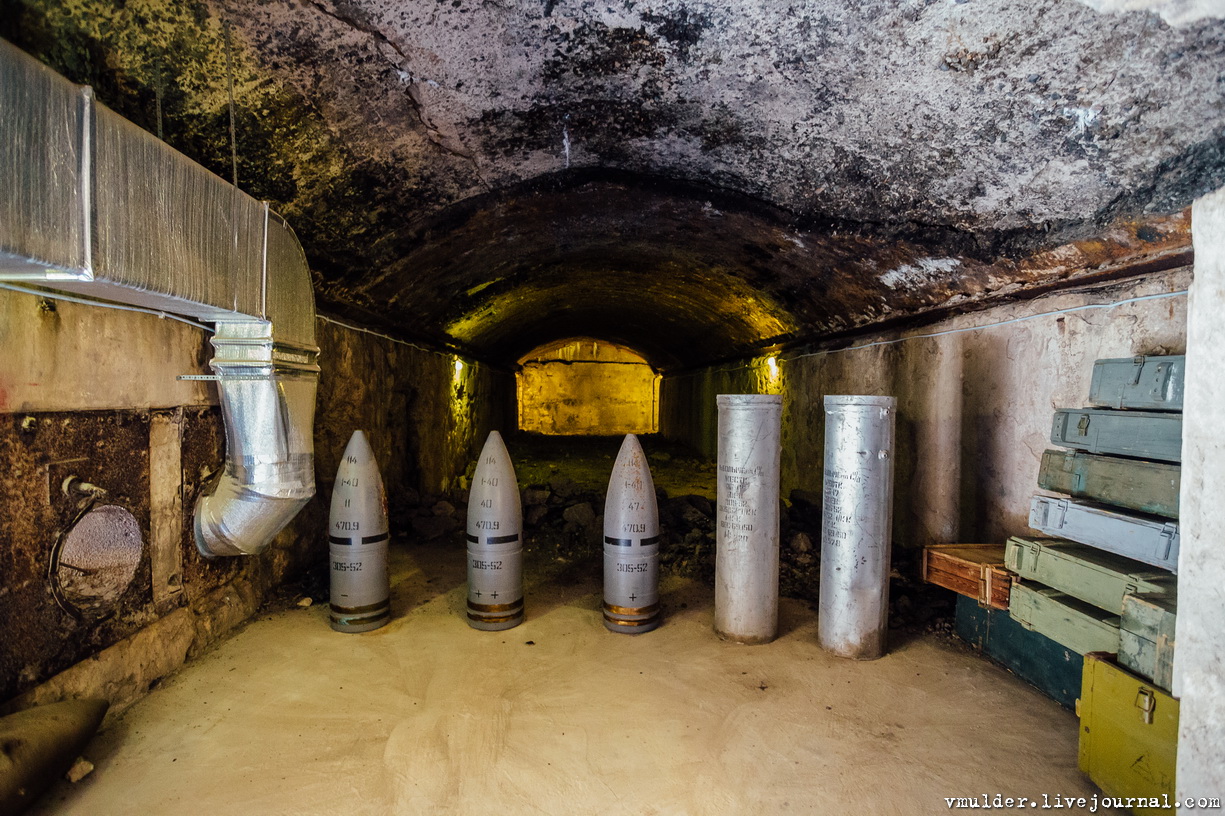
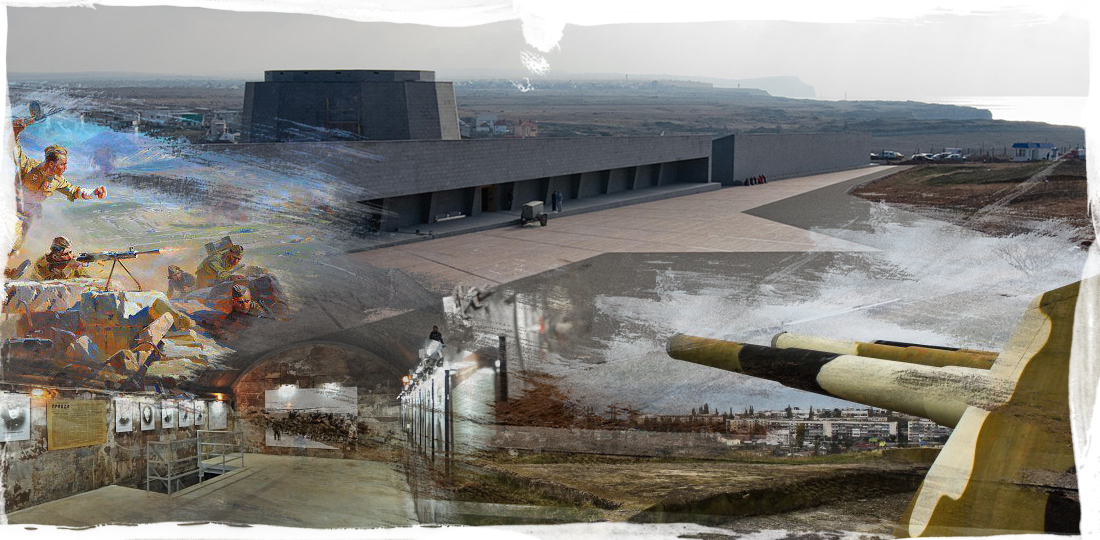
The decision to build a battery was made before the 1st World War. The coastal battery was designed by military engineer General N. A. Buynitsky. In 1913, construction began at Cape Khersones. Initially, the battery received No. 25. In 1918, due to political events, work was stopped, and guns, turret installations and mechanisms already ready for installation were installed in the coastal fortifications of the city of Revel (modern Tallinn). After the end of the civil war, it was decided to resume construction, and military engineers V. V. Vystavkin and B. K. Sokolov developed an appropriate project.
Work continued during 1924-1927. Upon completion of construction, the battery under the command of G.V. Steinberg became part of the 6th fortress artillery regiment of the BO World Cup with the number 8 assigned. In 1927, the battery became part of the 1st division of the 6th fortress artillery brigade under the number 35. In 1929 the coastal battery was visited by a group of Soviet state and party leaders headed by I. V. Stalin. The Soviet delegation was accompanied by several senior officers of the German army, led by General Blomberg.. At that time, Germany was an allied state with which our military shared their experience in building fortifications in the USSR. At the same time, requests from Turkish and Italian military delegations to visit the battery were politely declined.
Participation in the defense of Sevastopol
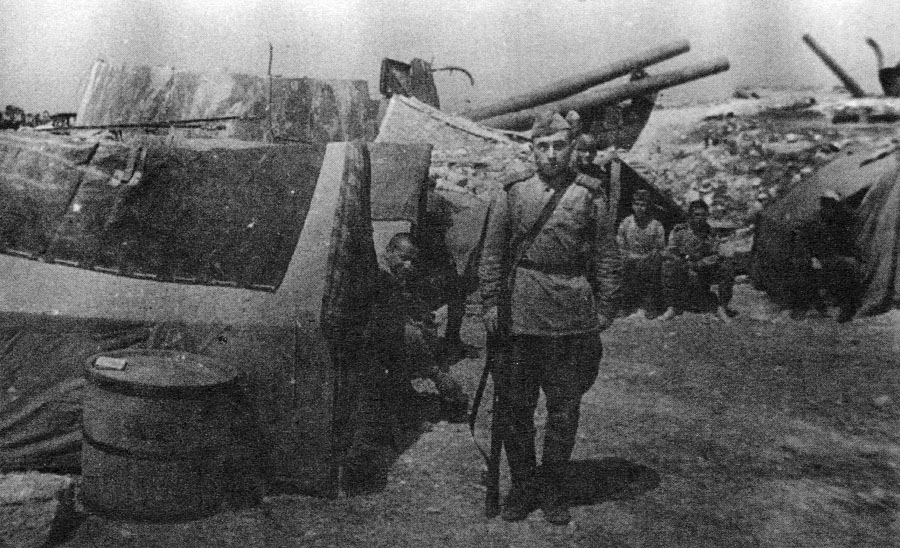
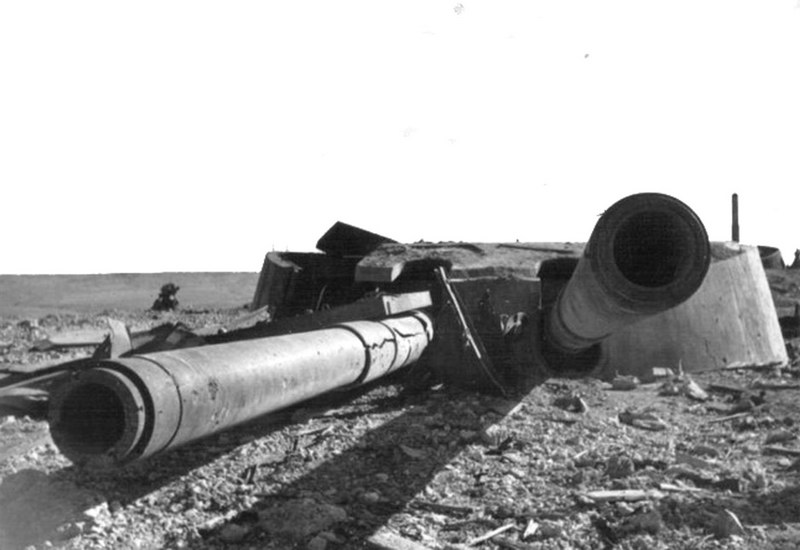 The first combat shots of the 35th BB were carried out on November 7, 1941, at the beginning of the defense of Sevastopol. The target was the German 132nd Infantry Division, which carried out an offensive in the direction of the Mekenzi farm (now the Mekenzievy Gory railway station). For two months, the gunners fired more than 300 shots with each gun, while the technological norm provided for 200, which led to the complete wear of the gun barrels. For this reason, on December 1, 1941, work began to replace the gun barrels of the 1st turret. The work was carried out by specialists from the Artillery Repair Plant No. 1127 (led by the brigade of S. I. Prokuda).During the replacement work in December 1941, only the 2nd turret fired.
The first combat shots of the 35th BB were carried out on November 7, 1941, at the beginning of the defense of Sevastopol. The target was the German 132nd Infantry Division, which carried out an offensive in the direction of the Mekenzi farm (now the Mekenzievy Gory railway station). For two months, the gunners fired more than 300 shots with each gun, while the technological norm provided for 200, which led to the complete wear of the gun barrels. For this reason, on December 1, 1941, work began to replace the gun barrels of the 1st turret. The work was carried out by specialists from the Artillery Repair Plant No. 1127 (led by the brigade of S. I. Prokuda).During the replacement work in December 1941, only the 2nd turret fired.
On December 17, 1941, the enemy launched a second assault on the city. The 35th BB conducted an intensive shelling of the positions of the Wehrmacht. Suddenly there was a huge explosion. As a later investigation showed, it was due to a premature shot (the powder charge ignited when the gun’s bolt was not completely closed). The 2nd tower exploded and was put out of action. About 40 gunmen were killed. At present, on the territory of the Museum Historical and Memorial Complex to the Heroic Defenders of Sevastopol “35th Coastal Battery” there is a monument erected by him. The 2nd armored turret was restored in combat conditions in just 2.5 months. Restoration work and replacement of trunks were carried out by workers of the Sevastopol Marine Plant named after S. Ordzhonikidze.
For the decisive contribution to the cause of the heroic defense of Sevastopol, by Order of the Navy Naval Forces No. 138 of June 18, 1942, the 1st separate artillery battalion of the Coastal Defense of the Black Sea Fleet, which at that time included the 35th armored turret battery, was awarded the guards rank.
In June 1942, the 35th BB fired massively at the German troops. After it was surrounded and the 30th coastal battery was blown up, the 35th BB remained the only reserve of heavy artillery in the Sevastopol Defensive Region (SOR). The enemy launched powerful air strikes on its territory. One of the raids on June 23, 1942 caused the failure of the 1st armored turret. At the end of June, the 35th BB became the location of the command posts of the Primorsky Army and the SOR. On June 30, the commander of the SOR, Vice Admiral F. S. Oktyabrsky, sent to the addressPeople’s Commissar of the Navy coded message:
The enemy broke through from the North side to the Ship side. The fighting proceeded in the nature of street fighting. The remaining troops are tired (faltering), although the majority continues to fight heroically. The enemy stepped up pressure with aircraft and tanks. Considering the strong decrease in firepower, we must assume that in this position we will hold out for a maximum of 2-3 days. Based on this specific situation, I ask you to allow me on the night of June 30 to July 1 to take out by plane 200-500 people of responsible workers, commanders to the Caucasus, and also, if possible, to leave Sevastopol myself, leaving here my deputy Major General Petrov.
Permission to evacuate the commanding staff was obtained.
On June 30, 1942, a special purpose parachute group of the Black Sea Fleet Air Force under the command of Senior Lieutenant Valerian Konstantinovich Kvariani arrived at the 35th coastal battery and was renamed the “Black Sea Fleet Special Forces Group” (“Group 017”). Its strength was brought up to a company due to the personnel of the 35th battery and several security units.
The special purpose group was entrusted with security and commandant duties inside the battery and at the Khersones airfield. And after the last meeting of the Military Council of the Navy and the Primorsky Army on June 30, 1942, which decided to leave for the North Caucasus by planes and submarines, the group was tasked with protecting and escorting commanders and responsible persons to the offshore pier with boarding passes for submarines. boats, also to guard the Khersones airfield during the arrivals of transport aircraft and to ensure that order is observed when landing on boarding passes, in the conditions of the presence of an uncontrollable armed mass of thousands of military and civilians there.
After the completion of the evacuation of the SOR command, during the day of July 1, 1942, the paratroopers-special forces were divided into approximately two equal parts. One group, remaining at Cape Khersones, took part in the final battles for Sevastopol that took place there. Another group, taking out boats and loading provisions, water and ammunition, went to the open sea in the direction of the North Caucasian coast.
Aircraft attacks began. The boat engines overheated and often stalled as the boats were overloaded. According to the commander of group 017, senior lieutenant V. K. Kvariani, members of the group of foreman A. N. Krygin, N. Monastyrsky, sergeant P. Sudak,enemy planes, approaching from the direction of the sun, began to bomb them and fire at them with machine guns of their choice.
After the last meeting of the Military Councils of the SOR and the Primorsky Army, F. S. Oktyabrsky (in other sources – Major General Morgunov) ordered the battery commander A. Ya. Leshchenko to organize cover for the evacuation and, after the ammunition was used up, blow up the guns and mechanisms. On July 1, the 2nd tower fired practical (for target practice) shells from the German 72nd Infantry Division attacking in the area of Cape Fiolent, since the combat ones had already ended at that time. The last time the battery struck point-blank shrapnel at the enemy in the Kamyshovaya Balka area. On the night of July 1-2, both towers and the power station were blown up. Posters and most of the rooms of the gun blocks were not destroyed and until July 12, 1942 continued to serve as a shelter for the last resisting defenders of Sevastopol.
By order of the People’s Commissar of the Navy dated December 4, 1943, tower battery No. 35 was expelled from the Navy, as it was destroyed during combat missions.
Post-war fate of the battery
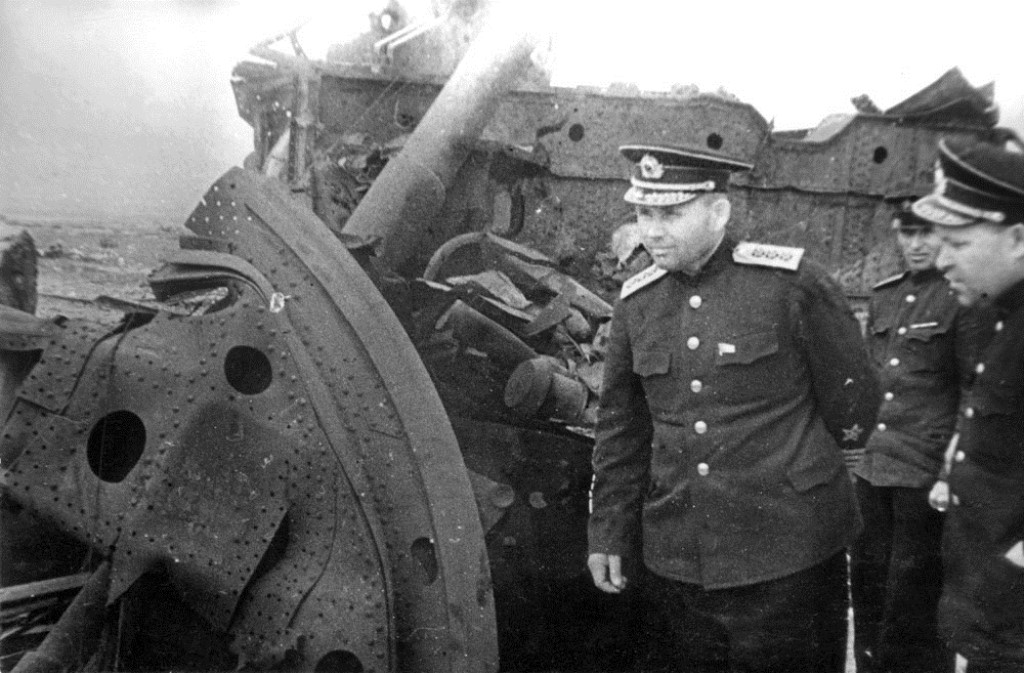
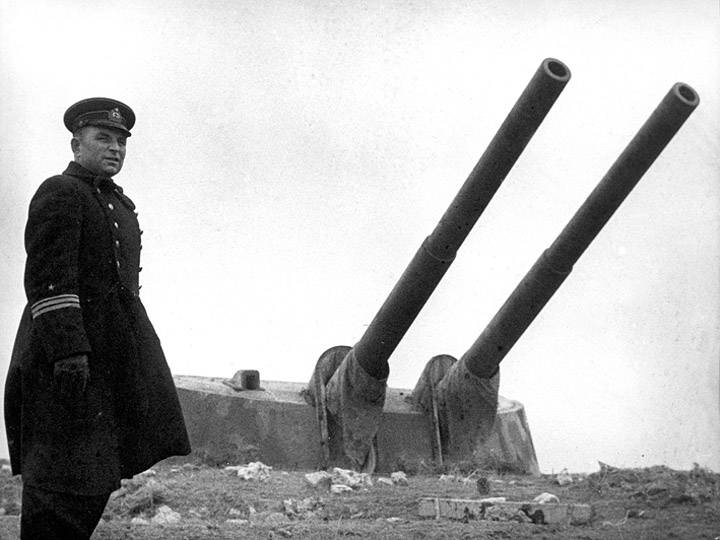
In the post-war period, the 35th coastal battery was not restored, however, part of its structures (the right wing of the 2nd tower block and the right command post) were used by the 130-mm coastal battery No. 723 installed in 1945 at Cape Khersones (disarmed in 1960).
In 1987, in the right command post of the 35th BB and its 450-meter line, a stationary interferometric station of the Simferopol State University named after M.V. Frunze was equipped, which is still in operation.
Since 2007, the museum historical and memorial complex “35th Coastal Battery” has been located on the territory of the battery.


